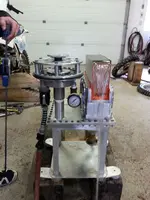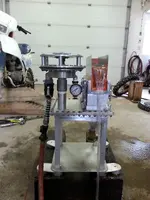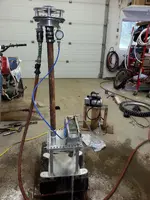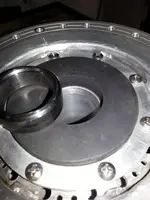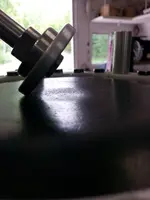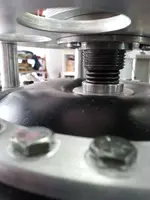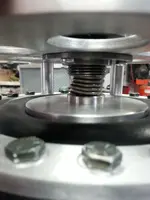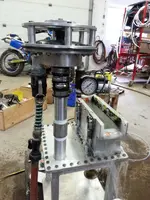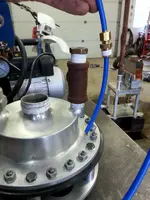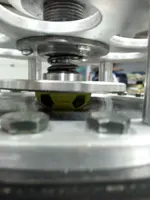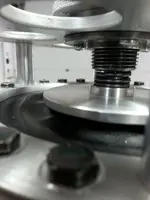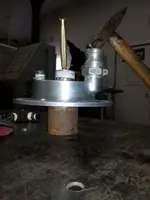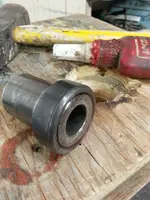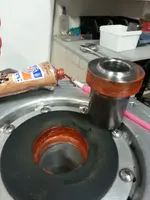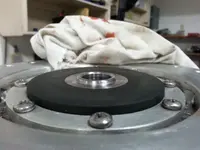Jim and Bill,
good info posts on reduction ratios etc.. Feel like i"m getting smarter by the day.. You guys post what ever suits you,, wont hear me complain, thats for sure..
Pulse valve test update-
- Hard pluming the stand pipe, i only had 1 collar to work with, so i started at the lowest position the valve can go.
- i extended the screen box height to simulate the same water level. from input to out flow. ( manometer test ) sort of.
-First test the screen box water level was 2 " higher than pulse valve water level.
- second test , i lowered the screen box out flow to the same water level as the pulse valve.
-third test , long stand pipe., 34 " water level difference.
-Plumbed in a 1/4" hard plastic line (blue) to vacuum out air in pipe stand
-fourth test, manufactured a steel ring seat, with a narrow curved top ,to focus on a small surface area to seal against the diaphragm gasket.
-fifth test, changed the 3.3/4" valve stem disk to the original smaller disk, 1.13/16"
-also tried slipping different "O" rings, rubber disks, and a half rubber ball , under the valve stem disks. . Also different compression springs.
